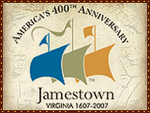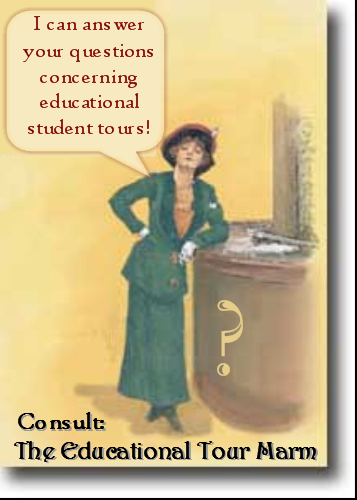
 Former 'Gum Tree' at the Peterson House.
Former 'Gum Tree' at the Peterson House.Some years ago one of my groups entered the National Museum of Air and Space immediately after it opened at 9:30 AM. There weren’t the usual longs lines of student tour groups waiting to enter that day and the teacher stopped short and looked at the great expanse of light colored carpet (I think it was blue) and exclaimed, “Look! They even have the cosmos embedded in the carpet!”
I paused, thinking that I had missed a bit of trivia concerning the building and surveyed the floor. Indeed, there were black spots of various sizes all over the carpet. It occurred to me that these spots weren’t intended to represent the cosmos; they represented careless gum chewers which seemed to be universal!
Naturally I used that stunning example to underscore the reasons for my tour rule: NO GUM! It was a great teaching moment which I have used several times since.
While I was growing up, quite frankly, my mother (and also my stepmother) did not allow us to chew gum. She considered it to be a low class preoccupation. In her view, ladies and gentlemen should neither be seen chewing gobs of gum in public, blowing bubbles, nor making ‘clicking’ sounds. It was ‘common’. (Common, in our family was much lower than, tacky.) She would point out the transgressors we would see during our outings and likened them to cows chewing their cud. (At least cows chew with their mouths closed!)
I'm sure some psychologists will say that gum chewing is an extension of the pacifier (something else my mother shunned). I've never clearly understood why people do chew gum except to clear their ears after a flight.
Gum chewing, alas, has become commonplace, but I still find it almost as unacceptable as smoking because of the litter. One can find gobs of gum and cigarette butts in the most peculiar places! The cigarette butts are bad enough, but they don’t get stuck on the soles of my shoes nor the back of my skirt!
In Washington, DC, as well as every tour site, there are prominent warning signs against gum chewing. Even motorcoach companies do not allow it on their buses. These signs and rules are not age specific. In the case of the government buildings in DC or battlefields etc., the prohibition is a Federal Law and not one to be dismissed by students nor adults.
It has become difficult to enforce this law or request, and local tour guides, such as myself, are taken to task,especially when we ask the adults to comply. I’ve tried my best to make it into a joke: Why is a train different from your tour guide? The train says, choo-choo, but your tour guide says, “don’t chew, don’t chew!” Or the recent reference from Night in the Museum: No Gum-gum for the Dum-dum.. It’s an uphill battle.
Why is gum chewing so prevalent? Why is it necessary? It certainly is an unattractive habit resembling addiction. Gum chewing actually detracts from one's looks and perception of intelligence.
But that aside, why are people so careless about the disposal?
The Peterson House, which is across the street from Ford’s Theatre, had a strange problem for years. A large student group, perhaps a band, was waiting to get into the Peterson House to see where President Lincoln died. Since nearly the whole school group was chewing, the local National Park Rangers explained that they would have to trash their gum. Some members took out the wads and threw them into the street, which infuriated the Rangers. The students then proceeded to stick their gum on the trees which were lining the street in front of the house. Thus the ‘gum trees’ were created as more and more groups stuck wads of gum on the bark and branches of the trees. Pennies were added to the bits gum (in ‘honor’ of Lincoln) and most of the trees on the block were covered with this mess that became a glob during the heat of the summer. It became a photo op and recognized tour sight.
Here is a posting I found on the NET concerning a Ford's Theatre visit:
We took my son here when he was young but he still enjoyed it since he had heard teh (sic) stories. To be in a place where something like this happened gave me goosebumps. Across teh (sic) street is a neat little tree outside of the place he died. Many have taken gum and attached a Lincoln head penny to it in his honor. We added one , too.
In my opinion this was not an honor, it was an act of vandalism.. both destructive and disgusting. And the above was done by an adult.
No one cared about the effect on the trees; unfortunately, these poor trees were unable to survive and were removed. (I also imagine that it was nearly impossible to remove everything deposited on the bark.)
So the taxpayers of America had to pay for the removal of the trees and the purchase and planting of new ones because of something that should be controllable. A fence surrounding the trees was also a requirement.
Government and private buildings, museums, monuments, and memorials are literally coated by gum. One can find them on walls and between floorboards of historic homes like Monticello and Mount Vernon. Williamsburg is having on on-going problem with gum. Removal is not easy and it is expensive. I wish I had statistics to share with you, but I can only imagine that the cost of gum removal each year in this country must be in the millions.
This has become a serious problem.
Recently outside our hotel in Manhattan, there was a van called, Gumbusters, capitalizing on the movie, Ghostbusters. While the workers did not have the same costumes and backpacks of Dan Ackroyd and company, there were funny looking machines that controlled high-powered stiff hoses which released a stream of steam and secret chemical.
Thankfully, this illustrated the recent talk I had had with my students earlier concerning gum litter. Watching the process was fascinating. Regrettably, Ii is a necessary service.
Why not do your part?
STOP CHEWING GUM!
(Or at the very least, dispose of it properly!)
Thanks!
Read the flash introduction to Gumbusters NY
Removal in the DC area
Wall of Gum photo in Seattle's Pike Place Market






















